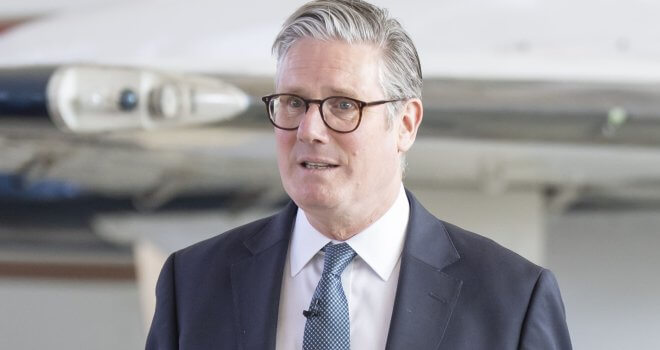Driving PMO Value During Economic Uncertainty: A Specialist PPM View

Across the PPM and PMO sector, uncertainty is the watchword moving into 2023. And, with global financial turbulence increasing, the conundrum of how to drive PMO value during economic volatility is a particular headline. According to Andy Jordan (Roffensian Consulting S.A.) and Dave Blumhorst (Planview Inc.), there is no real precedent for the months ahead. But, the pair say, that doesn’t mean that PMOs can’t take steps to be ready to adapt to new challenges. The key lies in adopting the right mindset, underpinned by the right PPM tooling, to empower your organisation.
Andy and Dave will present a live webinar on this subject on 8th December. So, our Associate Editor, Amy Hatton, recently spoke to them to get their collective view on what might be on the horizon, and how PMOs can gear up to embrace whatever the future of connected work may look like.
In PM Today’s most recent webinar (now available on demand), I was joined by a panel of Planview’s PPM specialists to explore how to challenge the PPM status quo. Arguably, in the current climate of uncertainty, PMOs may be cautious about embarking on that journey! But, according to Andy and Dave, embracing the unexpected with a proactive approach is not so much an optional extra as a business necessity to retain the competitive edge. “Having been in the business for four decades now, I’ve seen more than one recession in my career!” Dave says.
“I do feel that what’s coming next will not be like anything we’ve seen previously. I don’t think we’re necessarily headed for a cyclical downturn or full recession. What we’re dealing with is the consequences of pandemic-driven volatility – the after-effects of lockdown, supply chain issues, the great resignation, changing ways of working, digital transformation…and all of that is happening in a climate of rapidly climbing inflation. The reality is that, faced with such a complex environment, we simply can’t predict exactly what’s down the road. So, it’s vital for the PMO to work pro-actively – now – to consider what the different scenarios might be and work with sponsors to model strategies to tackle any of those scenarios as they potentially arise.”
By and large, Andy agrees – and he is keen to underscore the message that “this is about uncertainty rather than negativity. I do believe that opportunities for innovation are huge in this climate. The pandemic drove phenomenal digitisation growth. In my view, at the time, we embraced the technology, but not necessarily the opportunity for business transformation. That was understandable then – we just needed to keep the wheels turning. Now, there is a desire to leverage those evolving technology capabilities to reimagine the business. That’s tremendously exciting for organisations that have the vision to embrace new initiatives and ways of working. The PPM environment is a great area for that to happen and the PMO has a real opportunity to drive it.”
Indeed, there has been much talk in recent years of the PMO evolving from a process-driven function into a business-driven function. “This is where the change of mindset that we’ll be discussing on our webinar comes in,” Dave explains.
“It’s critical to move away from a purely tactical approach and start to think like a strategic PMO, with a focus on aligning portfolio delivery with the business objectives. I encourage PMO leaders to think in terms of value streams rather than discrete projects, and to engage in meaningful debate with the C-Suite to prioritise work intelligently. Powerful PPM tools of the kind that Planview offers provide the single source of truth to stimulate the debate – but it’s the debate itself that will really drive value.”
Andy adds that much of this is about the art of adopting a sponsor’s mindset. “Every executive on the planet wants to make their business better – and every sponsor is smart enough to know that any business function that can drive that is worth listening to. If your PMO doesn’t have a seat at the executive table, ask yourself: are you really speaking the language of the business? Because executives don’t care about constraints, or backlogs, or sprints. They care about return on investment, cost of ownership, and speed to market. As PMOs, we have to align to that mindset by understanding our work in the context of the overall strategy. If I had to whittle down my advice for PMOs to one word, I would say: ‘why?’. Why are you undertaking this project or value stream? Why is it essential for the business? If you can’t answer that question, you’re not adopting the strategic mindset that your executives need to see to understand your value. We’re seeing PMOs rebrand themselves as the ‘Strategy Office’ now, and I think that demonstrates where the PMO’s real impact should lie.”
All of this sounds great – but, with the PMO ultimately responsible for delivery, surely robust governance and process still need to be a part of the equation, even (or perhaps especially) when economic uncertainty is likely to squeeze budget parameters? Andy and Dave seem to agree that the ‘just enough’ governance model that evolved from the pandemic should lead the way here. “I would advocate starting with as lean a governance model as you can,” says Dave.
“You can always add new guardrails in! It’s much harder to remove them retrospectively. Governance should be about ownership, accountability and defining the overall objective, targets, and benefits. Within that, let your teams be accountable for deploying their expertise to deliver – their way. Give them the autonomy to flex and pivot at speed when they need to. If you want to measure targets and metrics and all of that, fine – we’ve got the PPM tooling and work management solutions to do that. But your people? They should be focused at a higher level. I advocate for keeping governance slim, lean, efficient, and effective, so that your talent pool is focused on value for the business, not process for its own sake.”
Dave, meanwhile, is clear that, “You need to drive the prioritisation process up the tree. I have never yet come across a PMO that has more capacity than it does demand! So, you must prioritise, and you have to engage your sponsors in that debate. Otherwise, you’ll just end up in an endless cycle of intensive process, trying to meet all of the demands, and not delivering full value on any of them. Prioritisation is something that all business executives understand. It’s your job to use your hands-on, close to market knowledge, to give them the insights they need to do it effectively.”
Andy agrees, and points out that, “Prioritisation according to business value is increasingly important for your people as well. If they’re constantly overloaded and burnt out, they won’t be geared up to perform when the next big opportunity arises. I think we’re at the point now where we need to move away from thinking about transformation and into a mindset of continuously evolving. There simply won’t be ‘business as usual’ moving forwards. There will always be a challenge, or crisis, or disruption around the corner. It’s very important to see the opportunities, even in a downturn – because if you don’t, your competitors most certainly will, and you’ll end up blindsided by them. It’s vital for PMOs to be what we call ‘business agile’ – by which I mean ready to flex, respond and pivot to deliver benefits rapidly and incrementally. That, really, is what we mean by the PMO adopting a mindset that empowers your organisation.”
Find out more:
Register for Andy and Dave’s webinar here.
Explore Andy’s PPM and PMO consulting services at www.roffensian.com.
Get thought leadership PPM resources and find out more about Planview’s suite of PPM and work management solutions at www.planview.com.




